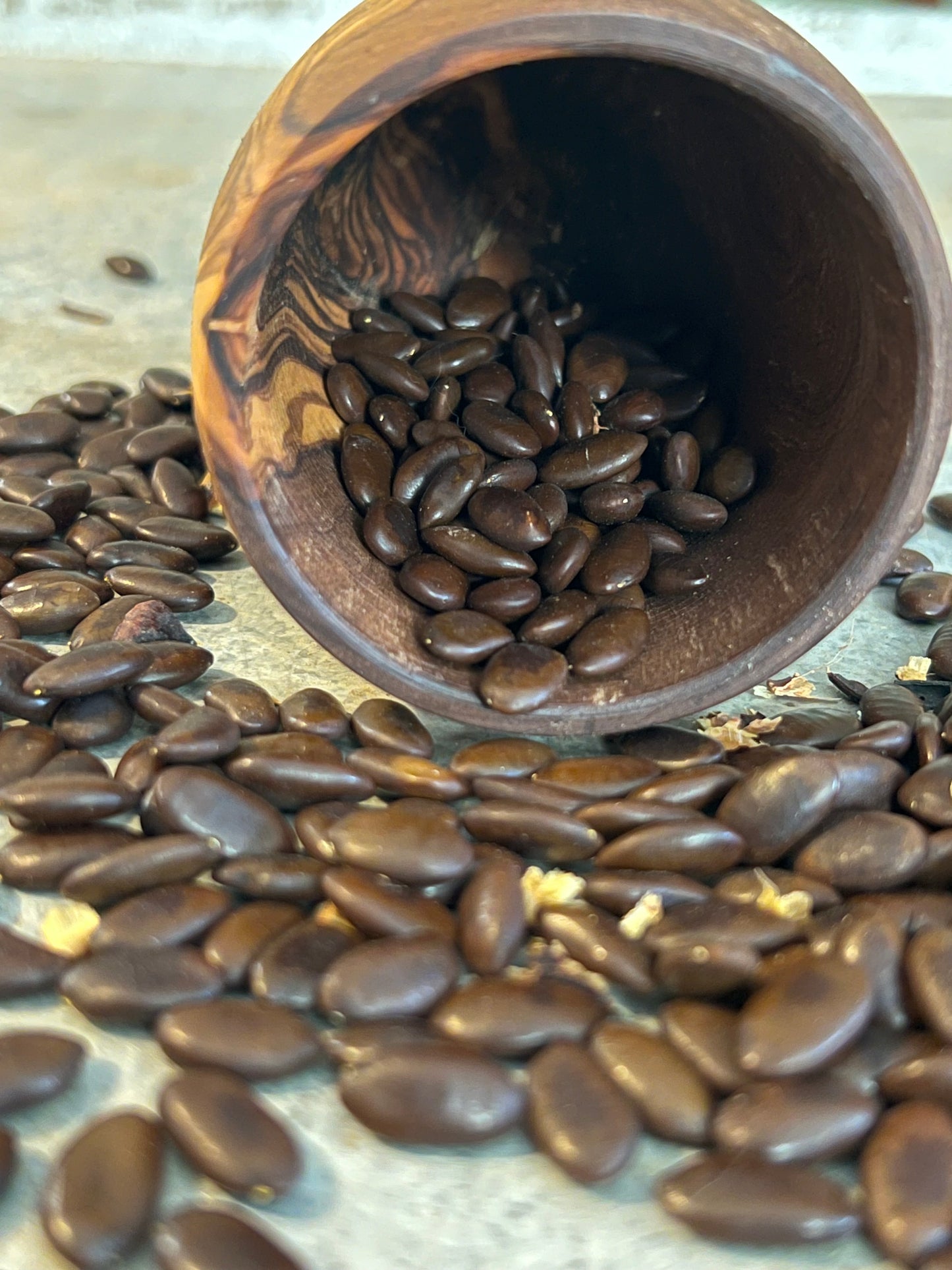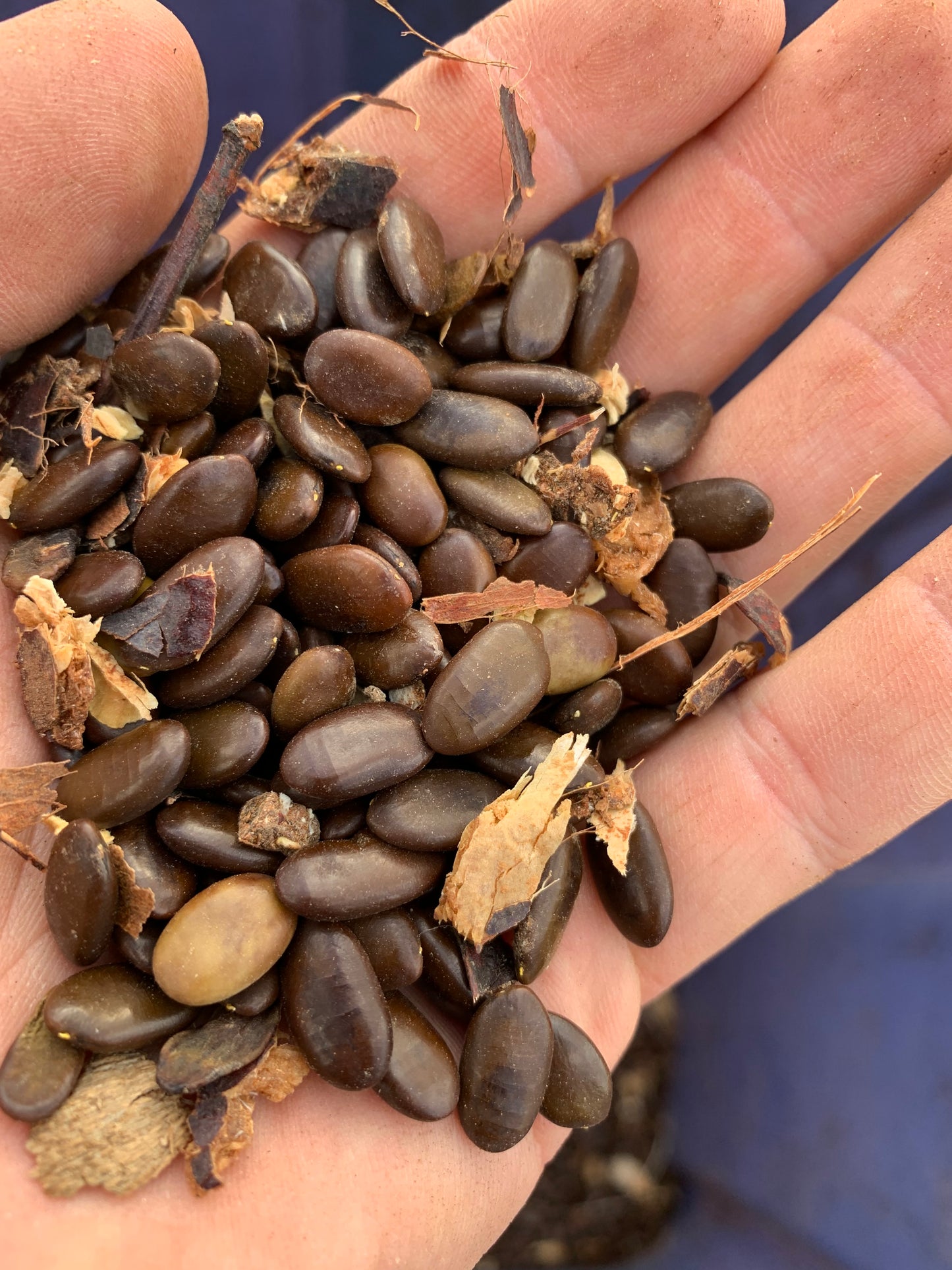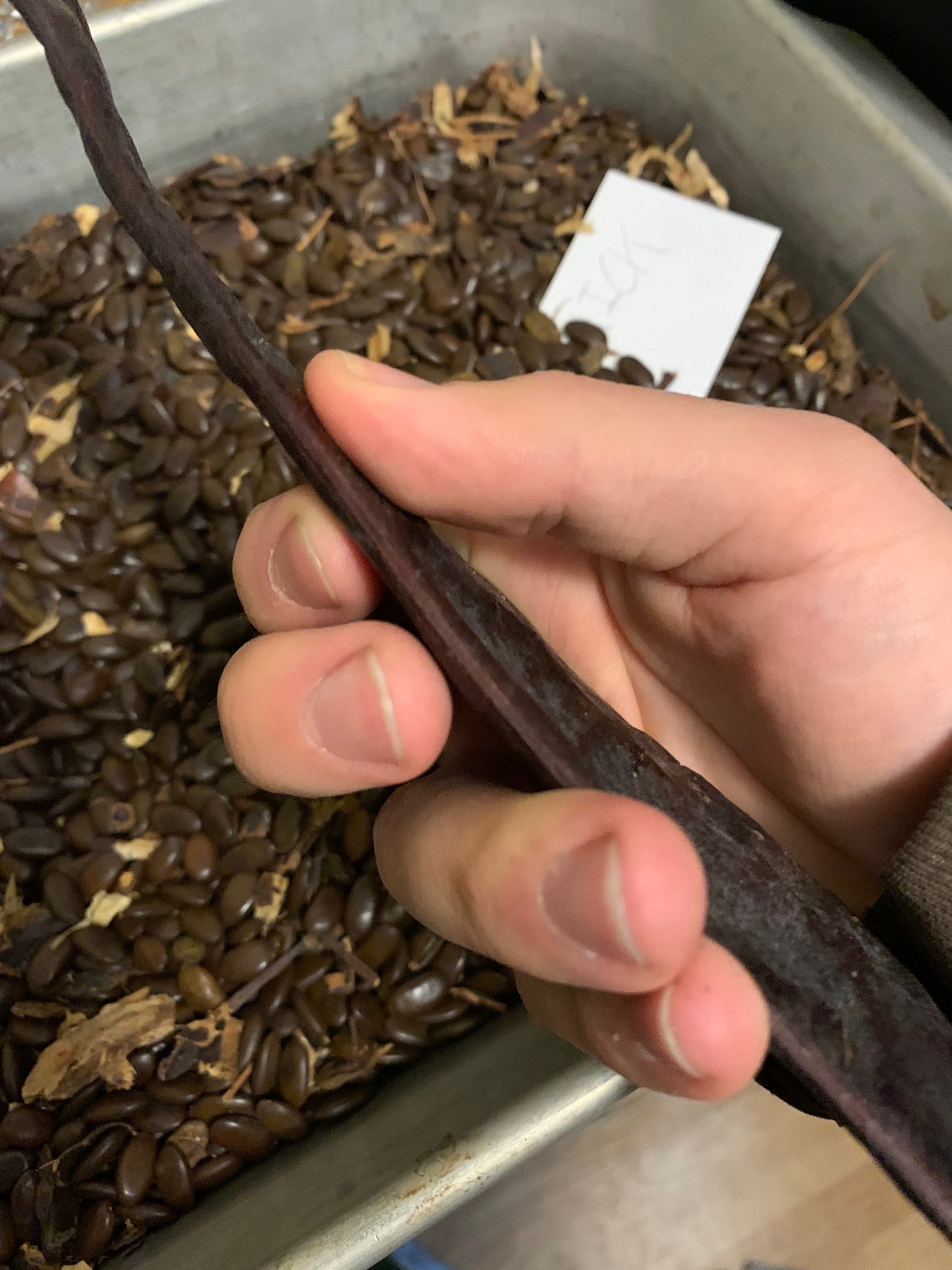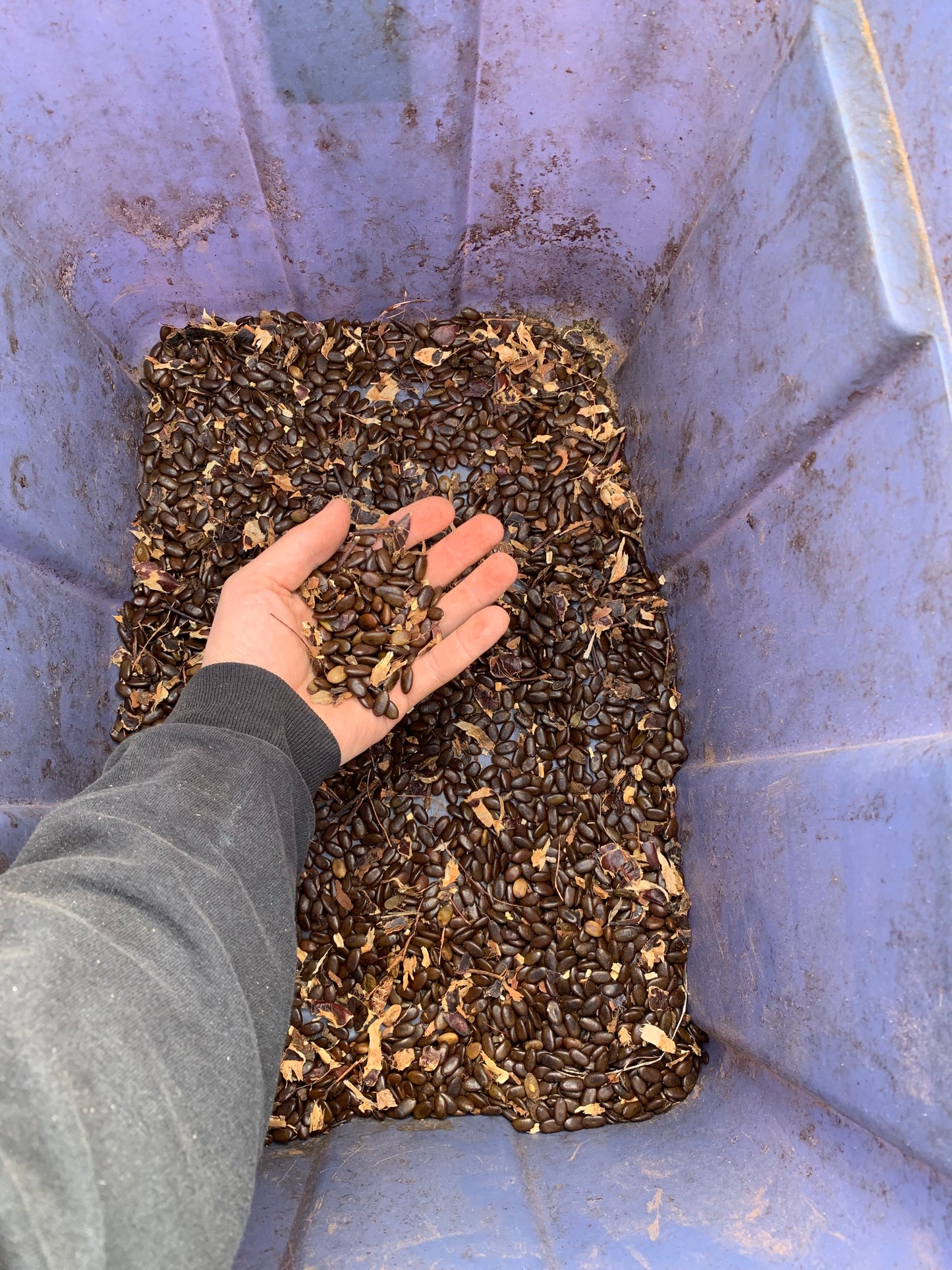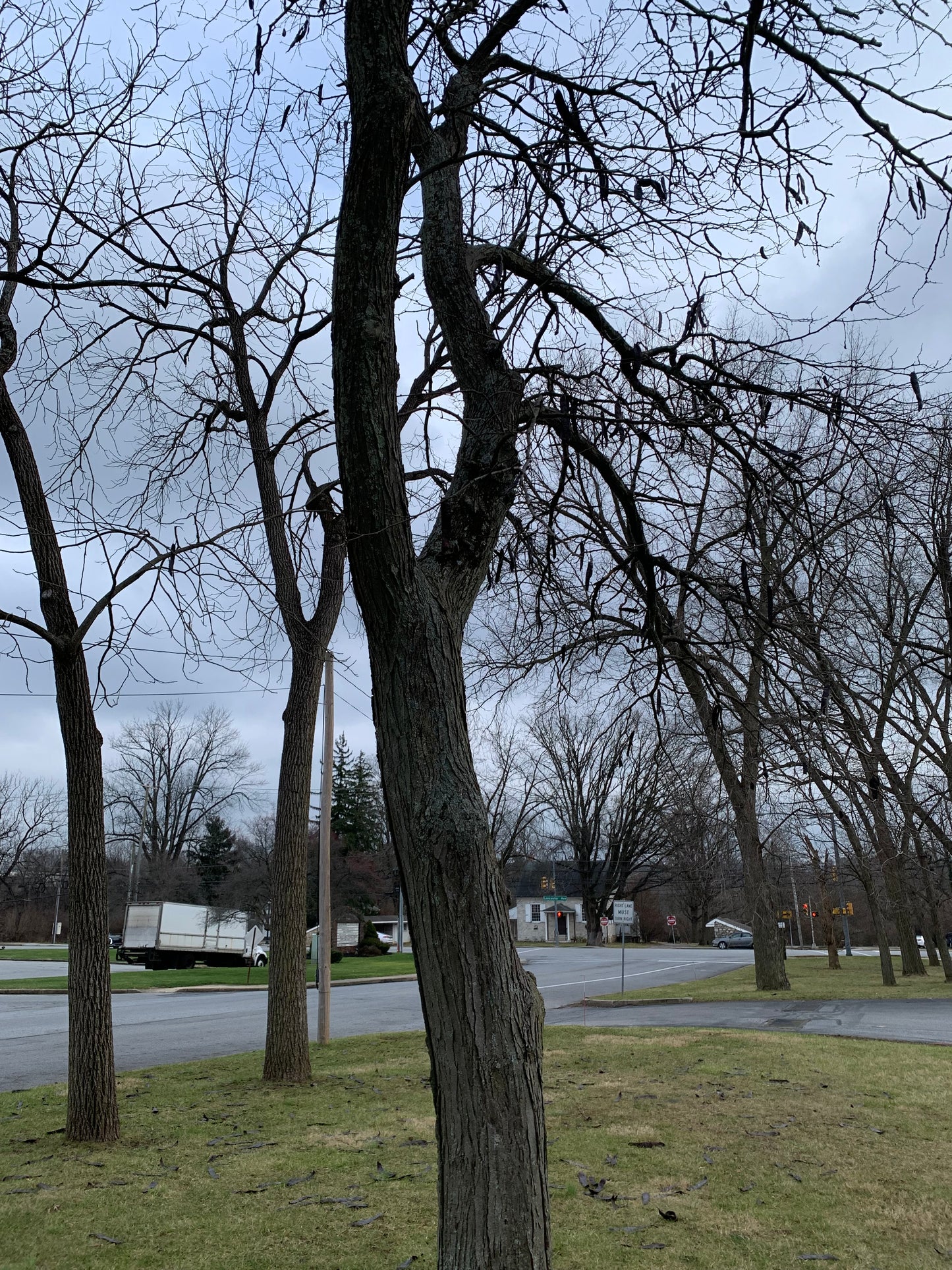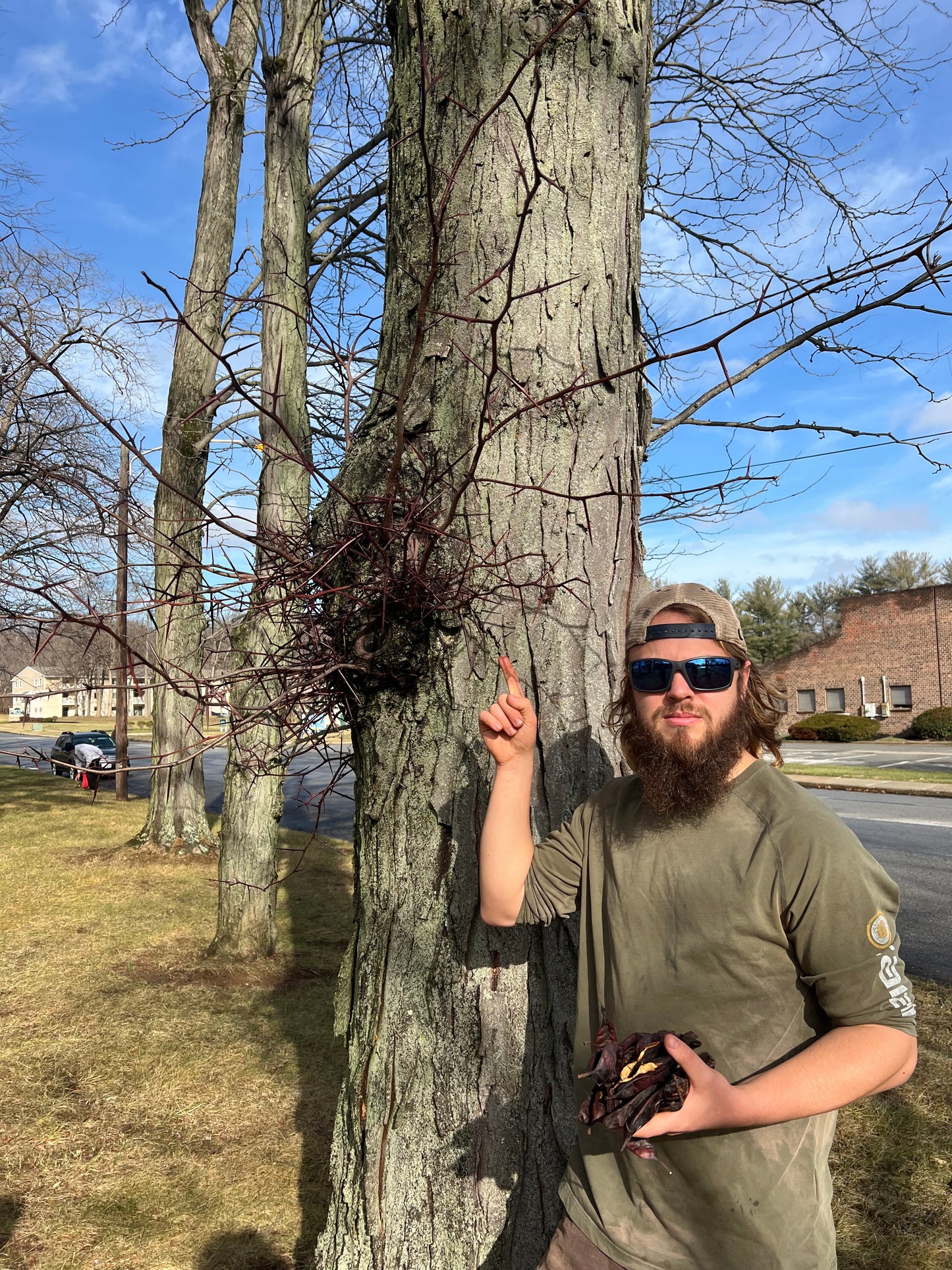Living Soil Tree Farm
Honey Locust Seed
Honey Locust Seed
Couldn't load pickup availability
Honey locust is fun and easy to grow from seed. They are a vigorous and fast-growing tree often able to reach 3 feet or larger in their first year. This year our seed stock comes from incredible mother trees at the remnants of John Hershey’s nursery in Downingtown PA. If you don’t know about John Hershey you can read more at the article linked below but I will give you the brief version here.
John was a giant of the tree breeding world in the 1900s. His nursery was often referred to as America’s number 1 tree crops nursery. John collected improved genetics for (mostly native) tree crops from all across the country. His selection criteria were mainly around increased food value for humans and livestock. In the case of honey locust John sought thornless trees with a high sugar content in the pods. When John found such trees, he brought back seed and scion wood to his nursery in PA. There he grew out seedlings and grafted the scion wood onto existing rootstock. By the time he died his 60-acre(ish) farm was a legendary collection of genetics. Sadly, this farm was not protected and more than half of the trees have been cut down to allow for construction of suburban houses and other infrastructure. Some trees remain spread across the landscape. It is from some of those trees that our seed came.
Across from the Quaker Friends Meeting House in Downingtown there is a row of trees which include several honey locusts. We gathered pods from each of the trees in this row. All trees in this row are thornless and had thick juicy pods packed with sugar. These are valuable genetics that John and many others fought hard to preserve. Desirable traits such as thornless-ness and high sugar content in pods will surely be passed on in some of the offspring. We just collected these seeds in fall 2023 and thus have not grown any out to determine what percentage show the thornless trait. We are confident that these seeds are worth growing. Around the Hershey farm you can find what look to be wild planted honey locust, many of which have no thorns. I assume these came from John’s mother trees and planted themselves.
Hershey row refers to the thornless trees with thick pods across from the Quaker Meeting House. To my knowledge these were definitely planted by Hershey.
Wild Hershey refers to some trees behind the Quaker meeting house that appear to be wild planted trees. The trees I collected from in this bath were thornless but had much less sugar content in the pods. Trees were loaded with a silly number of pods.
Honey locust is a highly adaptable and vigorous tree native to the east coast of the US. Livestock enjoy grazing the leaves and pods if they can access them. These trees respond well to coppicing. There is some debate as to whether honey locust can fix nitrogen in the soil. Many scientific sources state that honey locust does not develop root nodules that are present in other species that fix nitrogen via a relationship to rhizobium bacteria. There are however other ways that plants can fix nitrogen, rhizobium is not the only bacteria capable of this feat. If you would like to learn more about other ways that plants can fix nitrogen, we recommend looking at the research being done by Dr. James White at Rutgers University. Honey locust have an amazing yellow fall color.
Growing Instructions
Most resources say that honey locust seed requires scarification to germinate. This can be accomplished through an acid treatment (which I can’t comment on as I have no experience going that route) or a hot water bath. To scarify with hot water, bring a pot of water to a boil and then turn off heat. As soon as the water stops bubbling dump seeds into the water. Do not place seeds into boiling water, let the water cool slightly. Let soak for 24 hours. The water will continue to cool down as the seeds soak. You will want to plant the seeds ASAP after this process. Be sure to plant after danger of frost or protect seedlings somehow. I have also had luck sowing honey locust in the fall outdoors and letting them come up on their own in the spring but this is not advised in most sources I have read. Honey locust are desired food for many grazing animals so be sure to fence your seedlings! They dig and transplant easily at a young age.
Learn more about John's work:
https://www.shelterwoodforestfarm.com/blog/2018/10/17/exploring-americas-oldest-food-forest
https://www.phillymag.com/news/2018/07/07/downingtown-food-forest-urban-farming/
Materials
Materials
Shipping & Returns
Shipping & Returns
Dimensions
Dimensions
Care Instructions
Care Instructions
